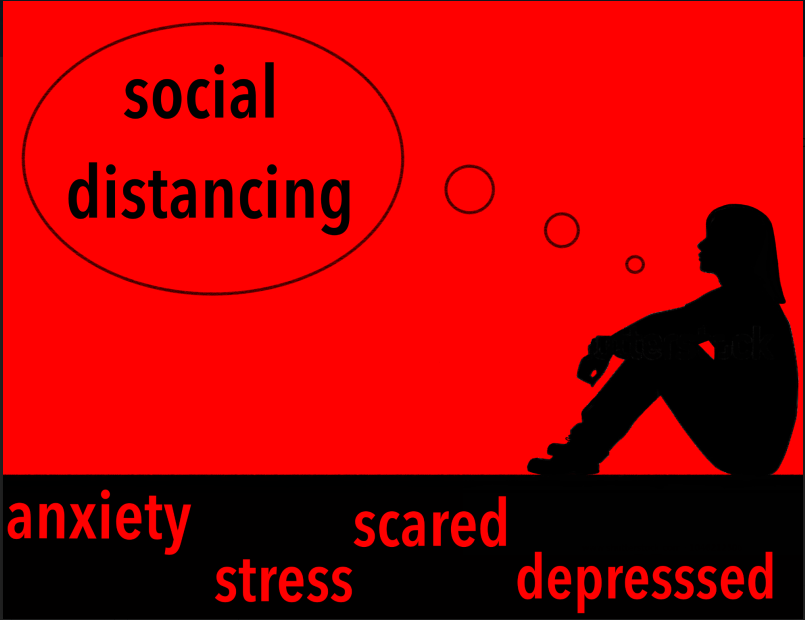Conversations with Caroline
Social Distancing vs. Physical Distancing
“Social distancing” is a phrase that was started in order to keep people safe from the global COVID-19 pandemic. This is affecting everyone’s mental health, especially teenagers, as we now learn a new way of life.
September 3, 2020
Teenagers across the world are dealing with the stresses of home life, school, and work. During March of 2020, teenagers had a new stress come their way: COVID-19, otherwise known as the coronavirus, has affected schools in a way no one thought it would. In-school students have to deal with new schedules and masks. For online students, they deal with internet issues and background noises. But the biggest problem of them all is “social distancing.” According to the CDC, anyone over the age of two is required to stay 6 feet away from people while wearing masks out in public.
Is “social distancing” the best way to phrase these new regulations?
As someone who struggles with anxiety, the phrase “social distancing” is not the best and most comforting way to describe staying safe this year. This implies that people are unable to talk and interact with each other. However, that is not the case. A lack of social interaction with others is the worst way to cope with the new struggles of 2020. Avoiding conversations and restricting interactions with other people can cause a sense of loneliness and isolation, which can only heighten a person’s anxiety and depression.
When quarantine first started, I did anything I could to escape my house during quarantine, even if it meant sitting in the car while my mom was in the store. When my parents finally allowed me to go into Walmart, I saw a lot of empty shelves and arguing. People started to get mad at students who worked there over mask rules and supplies being out of stock. This stressed many of the people working because there was nothing they could do to solve these problems, but customers were still upset.
There are many ways you can socialize with people without breaking any COVID-19 rules. Video chats and group chats are a great way to help people stay connected while being physically apart. It is also important to focus on your mental health. For example, taking a break from watching the news can help majorly. Everyone is talking about the coronavirus and it can just make you more upset about the whole situation. You can also do relaxing things throughout the day at home, like meditation, yoga, and doing art projects.
These distancing rules and regulations can severely damage a person’s mental health. In order to keep ourselves safe from COVID-19, we need to be clear that the emphasis is on physical distance, not social distance. Keeping ourselves physically 6 feet apart and always wearing a mask will help stop the spread of the coronavirus.
Social distancing gives people the wrong idea of how to handle COVID-19. People do not understand what others actually mean when they say social distancing, and it scares them. We need to change our perspectives and be cautious with terminology. Mental health is one of the most important factors for everyone’s well being, and it needs to be protected, especially this year.
COVID-19 is spread by not wearing masks and acting irresponsibly in gatherings, not by cutting out our social connections.

